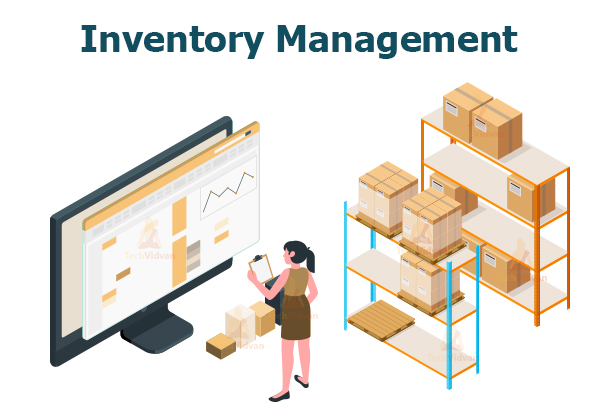Introduction
SQL (Structured Query Language) is a powerful data analysis and manipulation tool, playing a crucial role in drawing valuable insights from large datasets in data science. To enhance SQL skills and gain practical experience, real-world projects are essential. This article introduces the top 10 SQL projects for data analysis in 2023, offering diverse opportunities across various domains to sharpen SQL abilities and tackle real-world challenges effectively.
Table of contents
- Top 10 SQL Projects
- Sales Analysis
- Customer Segmentation
- Fraud Detection
- Inventory Management
- Website Analytics
- Social Media Analysis
- Movie Recommendations
- Healthcare Analytics
- Sentiment Analysis
- Library Management System
- Importance of SQL Data Science Projects
- Full Course on SQL
- Conclusion
- Frequently Asked Question
Top 10 SQL Projects
Whether you’re a beginner or an experienced data professional, these projects will enable you to refine your SQL expertise and make meaningful contributions to data analysis.
- Sales Analysis
- Customer Segmentation
- Fraud Detection
- Inventory Management
- Website Analytics
- Social Media Analysis
- Movie Recommendations
- Healthcare Analytics
- Sentiment Analysis
- Library Management System
Sales Analysis

Objective
The primary aim of this data mining project is to conduct an in-depth analysis of sales data to gain valuable insights into sales performance, identify emerging trends, and develop data-driven business strategies for improved decision-making.
Dataset Overview and Data Preprocessing
The dataset encompasses transactional information, product details, and customer demographics, crucial for sales analysis. Before delving into the analysis, data preprocessing is essential to ensure data quality. Activities like handling missing values, removing duplicates, and formatting the data for consistency are carried out.
SQL Queries for Analysis
Various SQL queries are utilized to perform the sales analysis effectively. These queries involve aggregating sales data, calculating key performance metrics such as revenue, profit, and sales growth, and grouping data based on dimensions like time, region, or product category. The queries further facilitate the exploration of sales patterns, customer segmentation, and identifying top-performing products or regions.
Key Insights and Findings
The sales analysis yields valuable and actionable insights for decision-making. It uncovers sales performance trends over time, pinpoints best-selling products or categories, and highlights underperforming regions. Analyzing customer demographics aids in identifying target segments for personalized marketing strategies. Additionally, the analysis may reveal seasonality effects, correlations between sales and external factors, and opportunities for cross-selling and upselling. With these insights, businesses can make informed decisions, optimize their operations, and drive growth and success.
Click here to view the source code.
Customer Segmentation

Objective
The Customer Segmentation project aims to leverage data analysis to group customers into distinct segments based on their unique characteristics and behaviors. By understanding customer segments, businesses can tailor their marketing strategies and offerings, improving customer satisfaction and overall business performance.
Dataset Overview and Data Preprocessing
To achieve accurate results, a comprehensive dataset containing consumer data, including demographics, purchase history, and browsing patterns, is utilized. The dataset undergoes meticulous preprocessing to handle missing values, normalize data, and remove outliers. This ensures the data is clean, reliable, and suitable for analysis.
SQL Queries for Analysis
The analysis heavily relies on a series of powerful SQL queries. By aggregating and summarizing consumer data based on relevant criteria such as age, gender, location, and shopping behaviors, these queries effectively extract and manipulate the data needed for customer segmentation.
Insights and Findings
Customer segmentation analysis provides valuable insights for businesses. It reveals distinct customer segments based on various factors, including demographics, interests, and buying behaviors. These segments may include high-value customers, loyal patrons, price-sensitive individuals, or potential churners. Armed with this knowledge, businesses can tailor marketing campaigns, fine-tune customer targeting, and elevate the overall customer experience. By effectively catering to the unique needs of each segment, businesses can foster stronger customer relationships and drive sustainable growth.
Click here to view the source code for this SQL project.
Fraud Detection

Objective
The primary goal of the fraud detection project is to utilize SQL queries to identify anomalies and potential fraud in transactional data. By analyzing the data, businesses can uncover suspicious patterns and take appropriate actions to mitigate financial risks.
Dataset Overview and Preprocessing
The dataset used for this project consists of transactional data, encompassing transaction amounts, timestamps, and user information. Data preprocessing is a crucial step to ensure the accuracy and reliability of the data before conducting the analysis. This includes removing duplicate entries, handling missing values, and standardizing data formats.
SQL Queries for Analysis
To perform effective fraud detection, a variety of SQL queries are deployed. These queries involve aggregating transactional data, calculating statistical measures, and detecting outliers or deviations from expected patterns. Advanced SQL functions and techniques, such as window functions, subqueries, and joins, can also enhance the analysis and improve fraud detection accuracy.
Key Insights and Findings
The analysis yields valuable insights and findings, such as identifying transactions with unusually high or low amounts, detecting patterns of suspicious activities, and pinpointing potential fraudulent accounts or behaviors. Furthermore, businesses can utilize the analysis to identify system vulnerabilities and implement proactive measures to prevent fraud in the future. By leveraging SQL for fraud detection, organizations can safeguard their financial interests and maintain a secure and trustworthy environment for their customers.
Click here to view the source code this project.
Inventory Management

Objective
The Inventory Management project aims to optimize supply chain operations and minimize costs by analyzing inventory data and ensuring efficient stock levels.
Dataset Overview and Preprocessing
The dataset used for this project contains vital inventory information, such as product names, quantities, prices, and reorder points. Before analysis, data preprocessing steps like data cleaning, duplicate removal, and handling missing values are crucial to ensure accurate results.
SQL Queries for Analysis
To effectively analyze inventory data, various SQL queries are employed. These queries calculate stock levels, identify products with low inventory, determine to reorder points based on historical sales data, and track inventory turnover. Additionally, SQL generates informative reports summarizing essential inventory metrics and highlighting products needing immediate attention.
Key Insights and Findings
The inventory analysis provides valuable insights, including identifying fast-selling products, optimizing stock levels to prevent stockouts or overstocking, and identifying slow-moving items for potential liquidation or promotional strategies. Moreover, the analysis streamlines procurement by ensuring timely reordering and reducing excess inventory costs. By leveraging SQL for inventory management, businesses can maintain smooth supply chain operations, maximize profitability, and enhance customer satisfaction through reliable product availability.
Click here to view the source code.
Website Analytics

Objective
The Website Analytics project aims to understand user behavior, traffic sources, and performance by analyzing website data. SQL queries will extract and analyze relevant data to optimize websites and enhance the user experience.
Dataset Overview and Preprocessing
The dataset used for website analytics typically consists of web server logs containing valuable information on user interactions, page views, and referral sources. Before conducting the analysis, data preprocessing steps are necessary to ensure data accuracy and efficiency. This involves cleaning the data, removing duplicates, and organizing it into appropriate tables for streamlined querying.
SQL Queries for Analysis
Website analytics will involve various SQL queries. These queries will include aggregating page views, calculating average time on site, identifying popular landing pages, tracking conversion rates, and analyzing traffic sources. SQL’s filtering and joining capabilities allow for targeted insights extraction from the dataset.
Key Insights and Findings
By leveraging SQL queries for website data analysis, significant insights can be derived. These insights include identifying high-traffic pages, understanding user navigation patterns, evaluating the effectiveness of marketing campaigns, and measuring the impact of website changes on user engagement. Such findings will guide website optimization strategies, content creation, and continuous improvement of the overall user experience, leading to higher user satisfaction and increased website performance.
Click here to view the source code for this SQL project.
Social Media Analysis

Objective
The Social Media Analysis project aims to gain comprehensive insights into user behavior, sentiment, and trending topics by analyzing social media data. SQL queries will extract valuable data from the dataset, assisting in brand reputation management and marketing strategies.
Dataset Overview and Preprocessing
The dataset for social media analysis typically comprises user-generated content such as posts, comments, and likes. Before analysis, essential data preprocessing steps, including eliminating duplicates, handling missing data, and cleaning text data, are conducted to ensure data accuracy and readiness.
SQL Queries for Analysis
SQL queries are vital in extracting meaningful insights from social media data. Queries can filter data based on specific criteria, calculate engagement metrics, analyze sentiment, and identify popular topics. Additionally, SQL allows tracking user interactions and performing network analysis to understand user connections and influence.
Key Insights and Findings
Analyzing social media data through SQL queries yields valuable insights. These include identifying high-performing posts, understanding user sentiment towards brands or products, discovering influential users, and uncovering emerging trends. These findings serve as a guide for effective marketing strategies, improved brand reputation, and enhanced engagement with the target audience, resulting in a more successful social media presence.
Click here to view the source code for this SQL Project.
Movie Recommendations

Objective
This project aims to develop a movie recommendation system using SQL queries. The system will generate personalized movie recommendations for users by analyzing movie ratings and user preferences, enhancing their movie-watching experience.
Dataset Overview and Preprocessing
A dataset containing movie ratings and user information is required to build the recommendation system. The dataset may include attributes such as movie IDs, user IDs, ratings, genres, and timestamps. Before analyzing the data, preprocessing steps like data cleaning, handling missing values, and data normalization may be necessary to ensure accurate results.
SQL Queries for Analysis
SQL queries will be employed to analyze the dataset to generate movie recommendations. These queries may involve aggregating ratings, calculating similarity scores between movies or users, and identifying top-rated or similar movies. Using SQL, the recommendation system can efficiently process large datasets and provide accurate recommendations based on user preferences.
Key Insights and Findings
The analysis of movie ratings and user preferences will yield valuable insights. The recommendation system can identify popular movies, genres with high user ratings, and movies frequently watched together. These insights can help movie platforms understand user preferences, improve their movie catalog, and provide tailored recommendations, ultimately enhancing user satisfaction.
Find the source code and complete solution to movie recommendation project here.
Healthcare Analytics

Objective
The Healthcare Analytics project aims to analyze healthcare data to derive actionable insights for improved patient care and resource allocation.
Dataset Overview and Data Preprocessing
The dataset for this project consists of healthcare records, including patient demographics, medical history, diagnoses, treatments, and outcomes. Before performing the analysis, the dataset must undergo preprocessing steps such as cleaning data, removing duplicates, handling missing values, and standardizing data formats. This ensures the dataset is ready for analysis.
SQL Queries for Analysis
To analyze the healthcare data, several SQL queries are used. These queries involve aggregating and filtering data based on various parameters. SQL statements can be written to calculate average patient stay, identify common diseases or conditions, track readmission rates, and analyze treatment outcomes. Additionally, SQL queries can extract data for specific patient populations, such as analyzing trends in pediatric care or assessing the impact of specific interventions.
Key Insights and Findings
By applying SQL queries to the healthcare dataset, valuable insights and findings can be obtained. These insights include identifying high-risk patient groups, evaluating treatment protocols’ effectiveness, understanding interventions’ impact on patient outcomes, and detecting patterns in disease prevalence or comorbidities. The analysis can also provide insights into resource allocation, such as optimizing hospital bed utilization or predicting patient demand for specialized services.
Click here to view the source code for this project.
Sentiment Analysis

Objective
The Sentiment Analysis project aims to analyze textual data, such as customer reviews or social media comments, and determine the sentiment associated with them. Businesses can assess their brand reputation and make informed marketing decisions by categorizing sentiments and measuring sentiment scores.
Dataset Overview and Preprocessing
The dataset for sentiment analysis typically consists of text samples and their corresponding sentiment labels. Before performing analysis, the data needs to be reprocessed. This involves removing special characters, tokenizing the text into words, removing stop words, and applying techniques like stemming or lemmatization to normalize the text.
SQL Queries for Analysis
To perform sentiment analysis using SQL, various queries can be employed. These queries include selecting relevant columns from the dataset, filtering based on specific criteria, and calculating sentiment scores using sentiment analysis algorithms or lexicons. SQL queries also enable grouping the data based on sentiments and generating summary statistics.
Key Insights and Findings
After performing the sentiment analysis, several key insights and findings can be derived. These may include identifying the overall sentiment distribution, detecting patterns in sentiment over time or across different segments, and pinpointing specific topics or aspects that drive positive or negative sentiments. These insights can help businesses understand customer opinions, improve their products or services, and tailor their marketing strategies accordingly.
Click here to view the source code for this project.
Library Management System

Objective
The Library Management System project aims to streamline library operations, enhance user experience, and improve overall efficiency in managing library resources. By leveraging modern technologies and data management techniques, the project seeks to provide an integrated and user-friendly system for library administrators and patrons.
Dataset Overview and Data Preprocessing
The dataset used for the Library Management System project includes information about books, borrowers, library staff, and transaction records. Data preprocessing is essential to ensure data accuracy and consistency. Tasks such as data cleaning, validation, and normalization will be performed to prepare the dataset for efficient querying and analysis.
SQL Queries for Analysis
Several SQL queries will be utilized to manage and analyze library data effectively. These queries may involve cataloging books, updating borrower records, tracking loan history, and generating reports on overdue books or popular titles. SQL’s capabilities enable the extraction of valuable insights from the dataset to support decision-making and optimize library services.
Key Insights and Findings
Through the analysis of the Library Management System data, key insights and findings can be obtained. These include understanding the most borrowed books and popular reading genres, identifying peak library usage times, and assessing the efficiency of library staff in managing book loans and returns. The system can also help identify patterns of late returns and assess the impact of library programs and events on user engagement.
Click here to fine the source code and complete solution for this project.
Importance of SQL Data Science Projects
SQL (Structured Query Language) plays a vital role in data science projects, offering powerful data manipulation, analysis, and extraction capabilities. Here are the key reasons why SQL is crucial in data science:
| Data Analysis Task | SQL Capability |
|---|---|
| Data Retrieval and Exploration | Efficient data retrieval from databases for exploring and understanding datasets |
| Data Cleaning and Preparation | Robust data cleaning and handling of missing values, duplicates, and data transformation for analysis |
| Data Transformation and Feature Engineering | Support for data transformations, joins, and creating derived variables for predictive modeling. |
| Complex Queries and Analytics | SQL enables complex queries, aggregations, and statistical analysis within databases, minimizing data extraction to external tools. |
| Scalability and Performance | SQL databases handle large datasets effectively, ensuring high performance for big data analytics and real-time processing. |
Full Course on SQL
Conclusion
SQL is a powerful tool for data analysis and manipulation, and it plays a crucial role in various data science projects. Through exploring top SQL projects, we have seen how it can tackle real-world challenges and gain valuable insights from diverse datasets.
By mastering SQL, data professionals can efficiently retrieve, clean, and transform data, paving the way for accurate analysis and informed decision-making. Whether it’s optimizing inventory, understanding user behavior on websites, or identifying fraud, SQL empowers us to unlock the hidden potential of data.
If you need help with learning SQL and solving SQL projects, then you must consider signing up for our blackbelt plus program!
Frequently Asked Question
A. SQL projects can encompass a wide range of data analysis tasks, such as sales analysis, customer segmentation, fraud detection, website analytics, and social media analysis. These projects utilize SQL queries to extract insights from various datasets.
A. To get SQL projects for practice, you can explore online platforms offering datasets for analysis, participate in data science competitions, or seek open-source datasets. Additionally, you can create your own projects with publicly available data.
A. In project management, SQL refers to the Structured Query Language used to manage and manipulate database data. SQL allows project managers to efficiently retrieve, update, and analyze project-related information.
A. When presenting a SQL project in an interview, clearly explain the project’s objective, the dataset used, and the SQL queries employed. Discuss key insights and findings, showcasing how SQL skills contributed to successful data analysis and decision-making.




